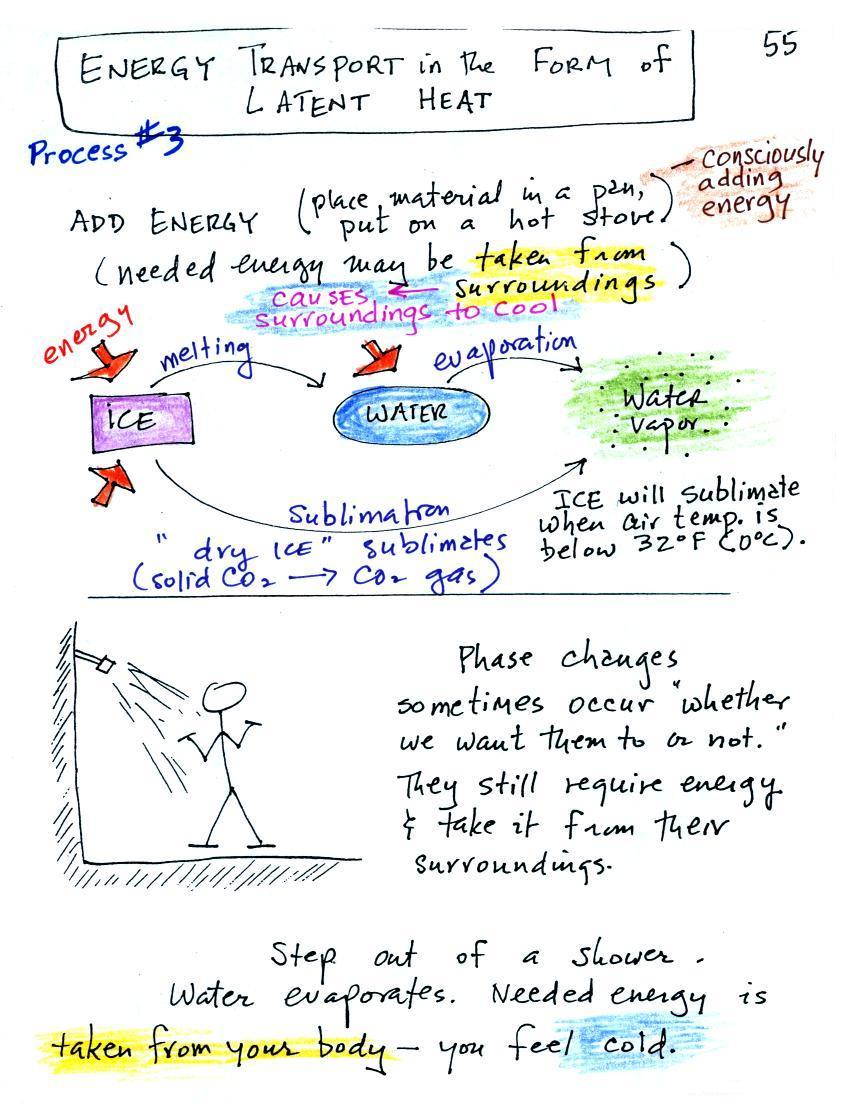
Latent heat energy transport is
associated with changes of
phase (solid to liquid, water to water vapor, that sort of thing) A
solid to liquid phase change is melting, liquid to gas is
evaporation, and sublimation is a solid to gas phase change (dry ice
sublimates when placed in a warm room, it turns directly from solid
carbon dioxide to gaseous carbon dioxide).
In each case energy must be added to the material changing phase. You can consciously add or supply the energy (such as when you put water in a pan and put the pan on a hot stove) or the phase change can occur without you playing any role. In that case the needed energy will be taken from the surroundings. When you step out of the shower in the morning, the water takes energy from your body and evaporates. Because your body is losing energy your body feels cold.
In each case energy must be added to the material changing phase. You can consciously add or supply the energy (such as when you put water in a pan and put the pan on a hot stove) or the phase change can occur without you playing any role. In that case the needed energy will be taken from the surroundings. When you step out of the shower in the morning, the water takes energy from your body and evaporates. Because your body is losing energy your body feels cold.
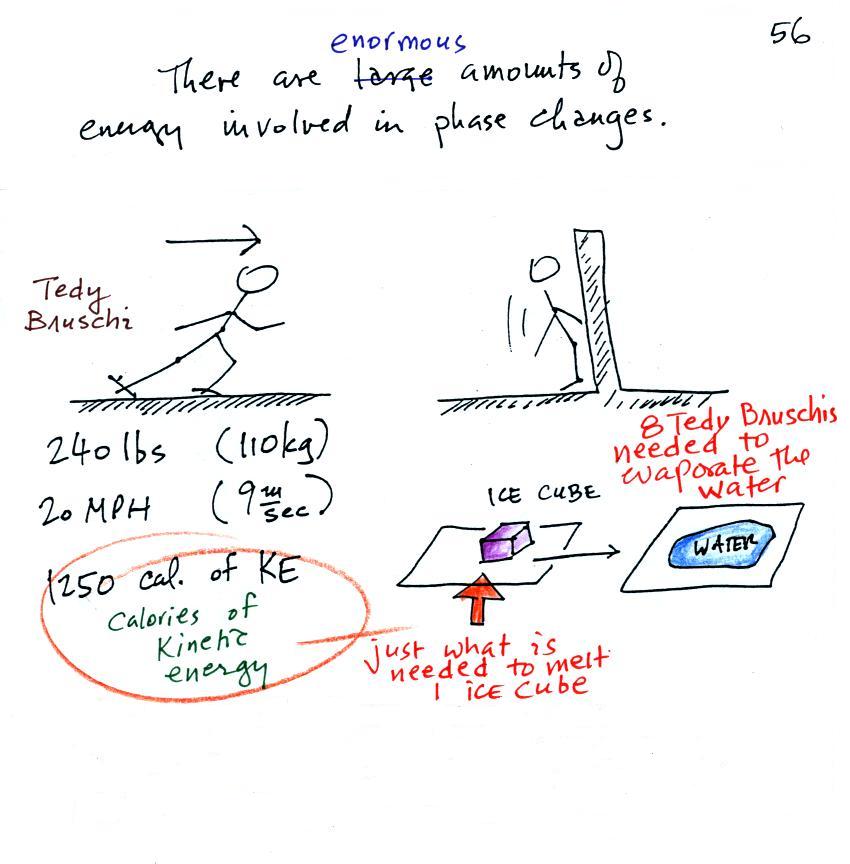
The object of this figure is to
give you some appreciation for the
amount of energy involved in phase changes. A 240 pound man or
woman running at 20 MPH has just
enough
kinetic energy (if you could capture it) to
be able to melt an ordinary ice cube. It would take 8 people
running at 20 MPH to
evaporate the resulting water.
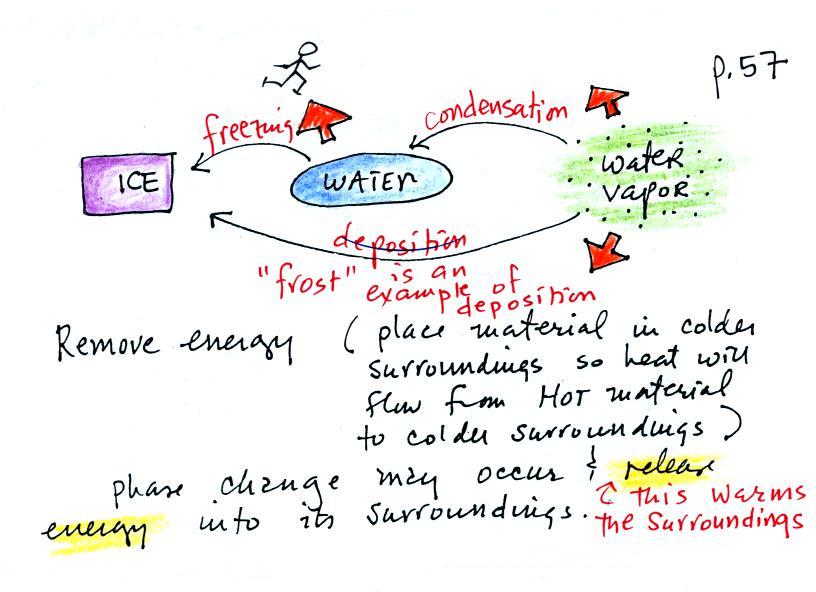
First we need to review a couple of rules concerning static electricity and learn something about electric field arrows.
The static electricity rules are found at the top of p. 59 in the photocopied ClassNotes
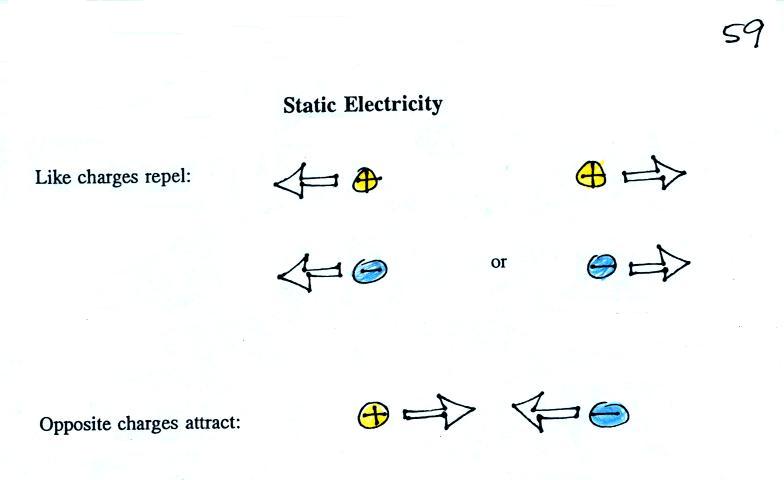
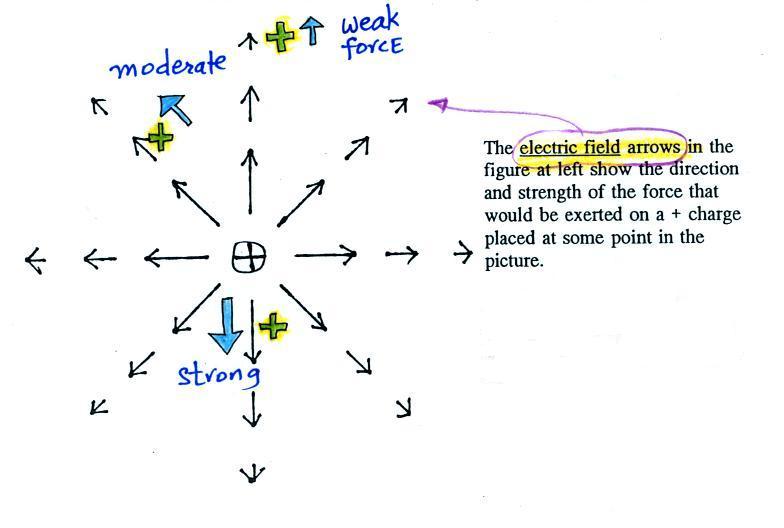

You can consciously remove energy
from water vapor to make
it
condense. You take energy out of water to cause it to freeze (you
could put water in a
freezer; energy would flow from the relatively warm water to the
colder surroundings). If one of these phase
changes occurs, without you playing a role, energy will be released
into the surroundings (causing
the surroundings to warm). Note the orange energy arrows have
turned around and are pointing from the material toward the
surroundings (note Tedy Bruschi being released from the water when it
freezes and turns into an ice cube).
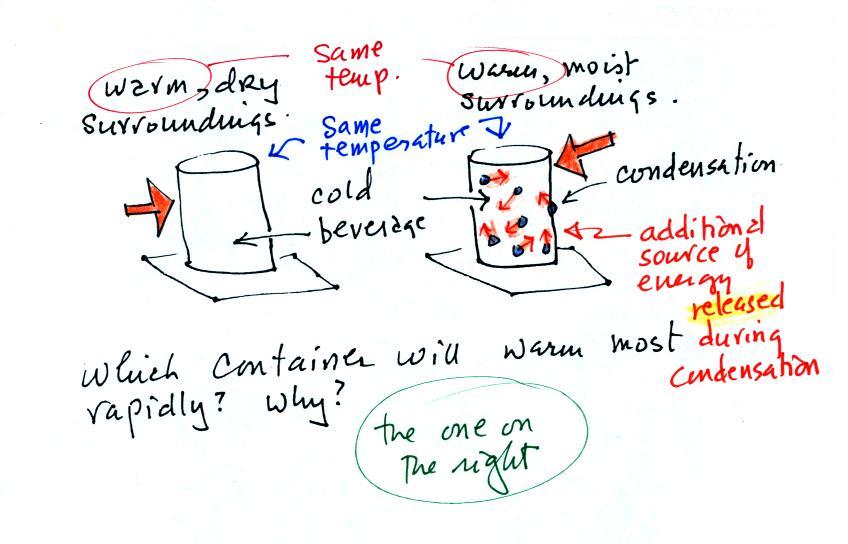


A can of cold drink will warm more
quickly in warm moist surroundings
than in warm dry surroundings. Equal amounts of heat will flow
from the warm air
into the cold cans in both cases. Condensation of water vapor is
an additional source of energy and will warm that can more
rapidly. The condensation may actually be the dominant process.
Have you ever stepped out of an air conditioned building into warm moist air outdoors and had your glasses or sunglasses "steam up"? It never happens to you (i.e. your body doesn't steam up) because your body is too warm. However if it did you would feel warm. It would be just the opposite of the cold feeling when you step out of the shower or a pool and the water on your body evaporates.
Have you ever stepped out of an air conditioned building into warm moist air outdoors and had your glasses or sunglasses "steam up"? It never happens to you (i.e. your body doesn't steam up) because your body is too warm. However if it did you would feel warm. It would be just the opposite of the cold feeling when you step out of the shower or a pool and the water on your body evaporates.

This figure shows how energy can be
transported from one
location to another in the form of latent heat. The story starts
at left in the
tropics where there is often an abundance or surplus of sunlight
energy. Some of the incoming
sunlight
evaporates ocean water. The resulting water vapor moves somewhere
else and carries hidden latent heat energy with it. This hidden energy
reappears when something (air running into a mountain and rising,
expanding, and cooling) causes the water vapor to condense. The
condensation releases energy into the surrounding atmosphere.
This would warm the air.
Energy arriving in sunlight in the tropics has effectively been transported to the atmosphere in a place like Tucson.
We're ready to tackle electromagnetic radiation, the most important of the four energy transport processes (it's the most important because it can carry energy through empty space).
Energy arriving in sunlight in the tropics has effectively been transported to the atmosphere in a place like Tucson.
We're ready to tackle electromagnetic radiation, the most important of the four energy transport processes (it's the most important because it can carry energy through empty space).
First we need to review a couple of rules concerning static electricity and learn something about electric field arrows.
The static electricity rules are found at the top of p. 59 in the photocopied ClassNotes

Two electrical charges with the
same polarity push each other
apart. Opposite charges are attracted to each other.
I tried a short "static electricity" demonstration that consisted of blowing bubbles toward a Van de Graaff generator. The metal ball at the top of the generator gets charged up with electricity (I'm not sure what polarity it is). Some of that charge leaks off into the air. I thought that this charge would stick to the bubbles floating by. Then since the bubbles would have the same charge as the generator, the bubbles would be pushed away from the generator. Here's a video that shows what is supposed to happen.
The demonstration in class didn't work very well at all. Most of the bubbles seemed attracted to the dome of the generator. After doing a little research I found that the people blowing the bubbles and the dome of the Van de Graaff were oppositely charged. The demonstration was actually behaving like it should have, it was just the set up that was wrong. I'm still playing with the demonstration and if I can get it to work a little more reliably I'll bring it back to class.
Electric field arrows (or just the E field) show you the direction and give you an idea of the strength of the electrical force that would be exerted on a positive charge located at that point.
I tried a short "static electricity" demonstration that consisted of blowing bubbles toward a Van de Graaff generator. The metal ball at the top of the generator gets charged up with electricity (I'm not sure what polarity it is). Some of that charge leaks off into the air. I thought that this charge would stick to the bubbles floating by. Then since the bubbles would have the same charge as the generator, the bubbles would be pushed away from the generator. Here's a video that shows what is supposed to happen.
The demonstration in class didn't work very well at all. Most of the bubbles seemed attracted to the dome of the generator. After doing a little research I found that the people blowing the bubbles and the dome of the Van de Graaff were oppositely charged. The demonstration was actually behaving like it should have, it was just the set up that was wrong. I'm still playing with the demonstration and if I can get it to work a little more reliably I'll bring it back to class.
Electric field arrows (or just the E field) show you the direction and give you an idea of the strength of the electrical force that would be exerted on a positive charge located at that point.

In this figure (p. 59 in the
ClassNotes) a positive charge has been placed at 3 locations around a
center charge. The electric field arrow shows the direction of
the force that would be exerted on each of the charges. The force
arrow is shown in blue.
The E field arrows tell you what will happen to a + charge. You can use the arrows to determine what will happen to a - charge also.
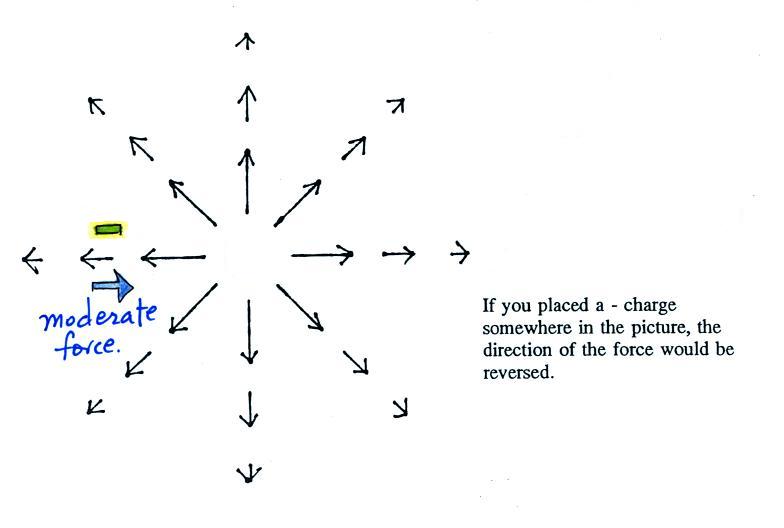
For a negative charge the force will point in a direction opposite the E field arrow.
Here's a figure to test your understanding.
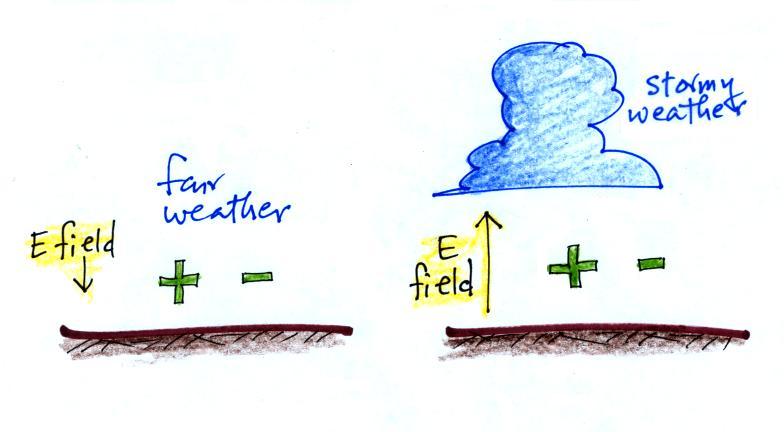
The E field arrows tell you what will happen to a + charge. You can use the arrows to determine what will happen to a - charge also.

For a negative charge the force will point in a direction opposite the E field arrow.
Here's a figure to test your understanding.

The direction and strength of the E
field near the ground during fair weather and under a thunderstorm are
shown. Show the directions of the forces that would be exerted on
the charges shown in the figure. Click here when you think you
have the answer.
We're learning about E fields so that we can understand how electromagnetic radiation can transport energy from one place to another. You'll find most of the following on p. 60 in the photocopied ClassNotes. What follows is a little more detailed explanation than was shown in class.
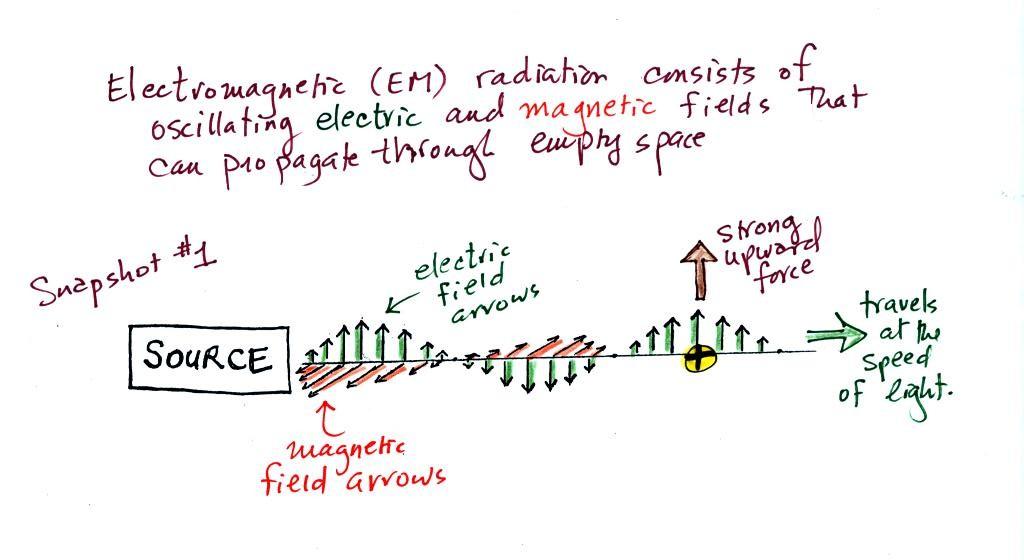
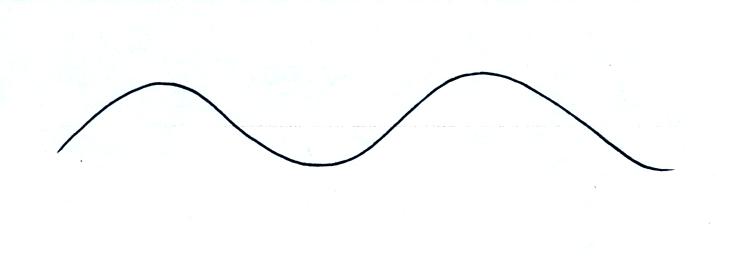
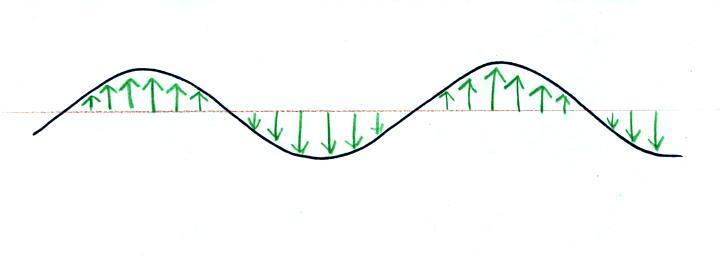
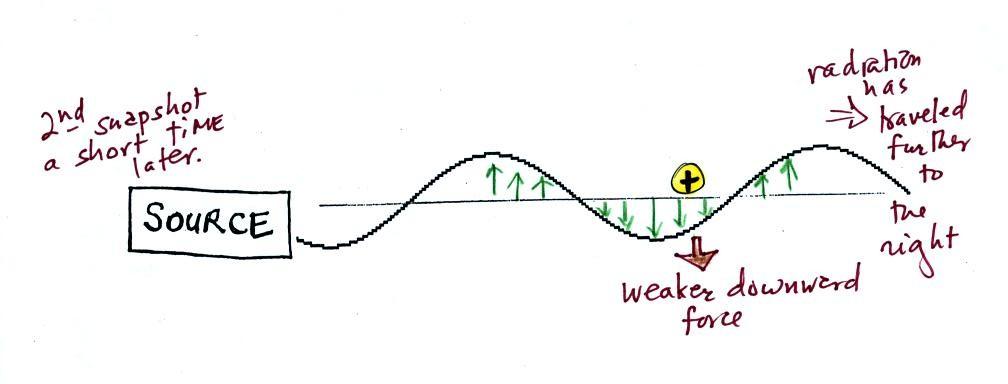
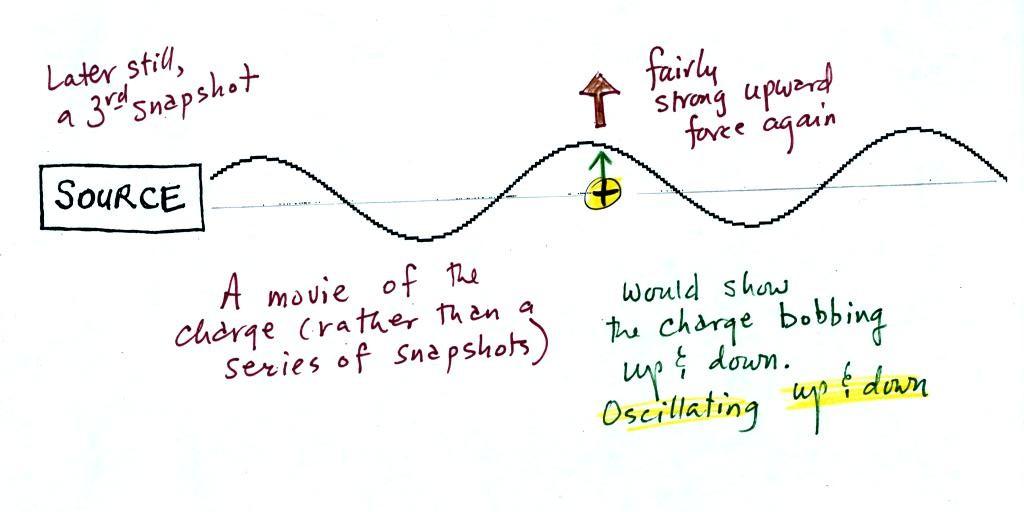
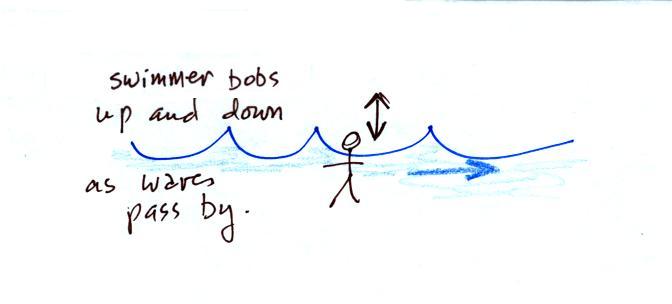
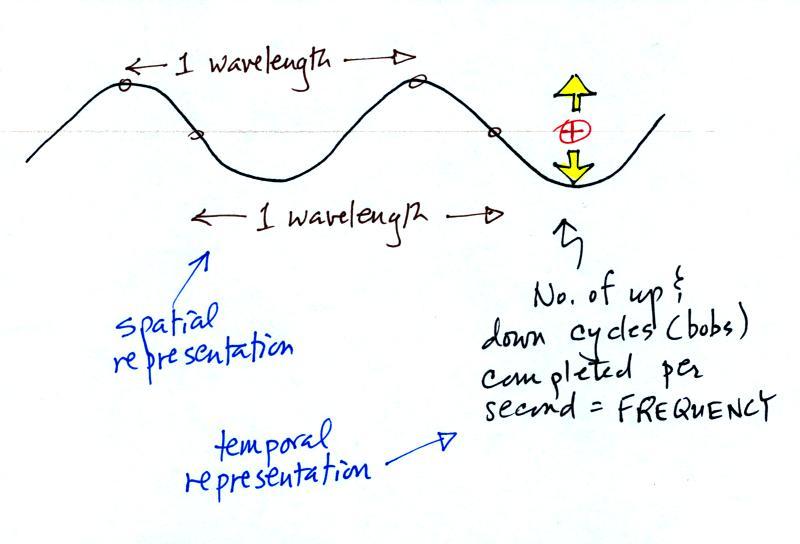
Or you can describe the radiation temporally using the frequency of oscillation (number of up and down cycles completed by an oscillating charge per second). By temporally we mean you look at one particular fixed point and look at how things change with time.
We're learning about E fields so that we can understand how electromagnetic radiation can transport energy from one place to another. You'll find most of the following on p. 60 in the photocopied ClassNotes. What follows is a little more detailed explanation than was shown in class.

We imagine turning on a source of
EM radiation and then
a
very short time
later we take a snapshot. In that time the EM radiation has
traveled to the right (at the speed of light). The EM radiation
is a wavy pattern of
electric and magnetic field arrows. We'll ignore the magnetic
field lines. The E field lines sometimes point up, sometimes
down. The pattern of electric field arrows repeats itself.
Note the + charge near the right
side of the picture. At the time
this
picture was taken the EM radiation exerts a fairly strong upward force
on
the
+
charge (we use the E field arrow at the location of the + charge to determine the direction
and strength of the force exerted on the + charge).

Textbooks often represent EM
radiation with a wavy line like shown
above. They don't usually explain what the wavy line represents.

The wavy line just connects the
tips of a bunch of electric
field
arrows.

This picture was taken a short time
after the first snapshot aftere the radiation
had
traveled a little further to the right. The EM radiation now
exerts a somewhat weaker downward force on the + charge.

The +
charge is now being
pushed upward again. A
movie
of
the +
charge, rather than just a series of snapshots, would show the
charge
bobbing up and down much like a swimmer in the
ocean would do as waves passed by.

The wavy pattern used to
depict EM radiation can be described spatially in terms of its
wavelength,
the distance between identical points on the pattern. By
spatially we mean you look at different parts of the radiation at one
particular instant frozen in time. The following figure
wasn't shown in class on Monday. This is about where
we'll start on Friday.

Or you can describe the radiation temporally using the frequency of oscillation (number of up and down cycles completed by an oscillating charge per second). By temporally we mean you look at one particular fixed point and look at how things change with time.